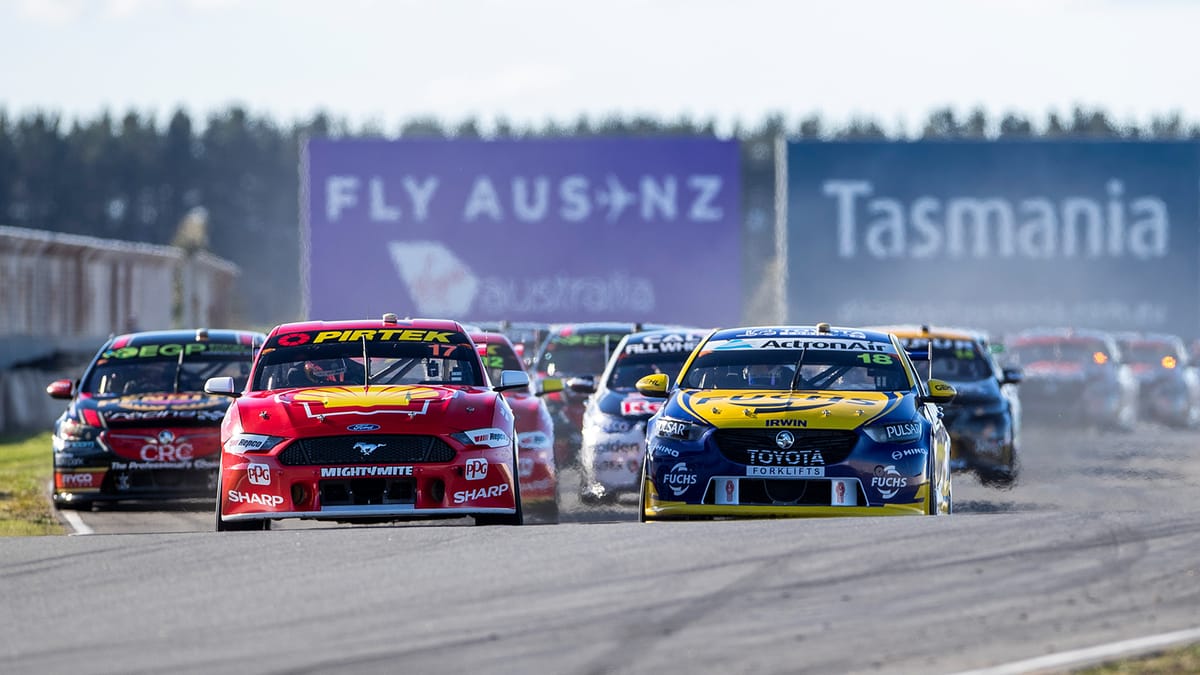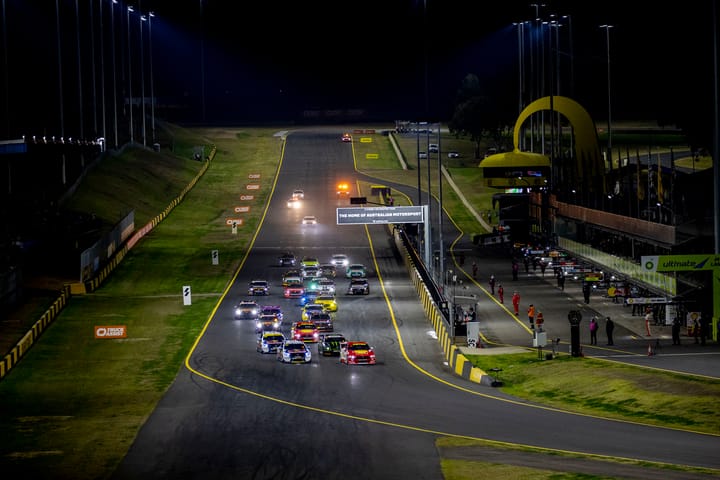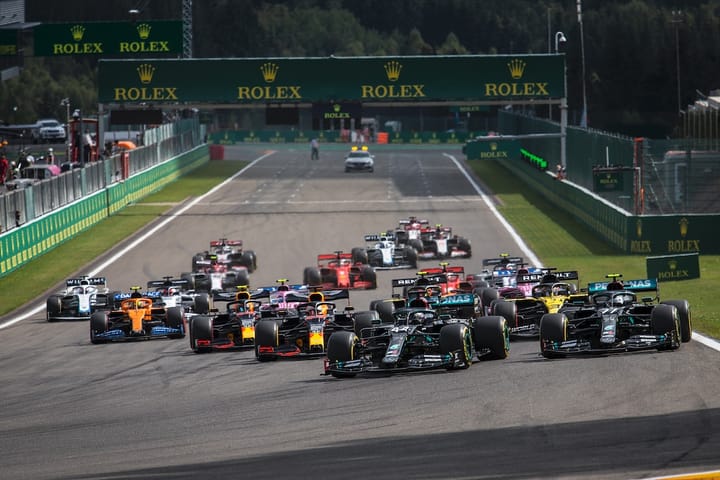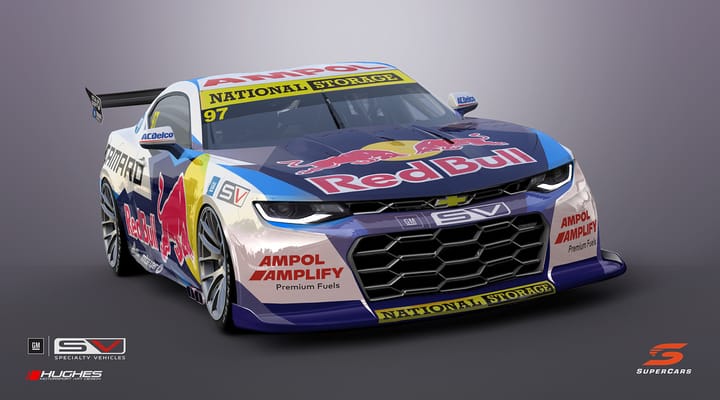Reverse grid racing to add uncertainty

Reverse grid racing is at the heart of a plan to inject extra sizzle and uncertainty into the 11-race championship that will bring Supercars back to life in 2020.
Flipping the grid is one of the proposals for two-day meetings without spectators, and only a single two-driver enduro at Bathurst, to deliver action for race-starved fans.
The back-to-front idea is the heart of a plan for three 100-kilometre sprints on the Sunday of every meeting except Bathurst, in a move that tracks back to touring car racing in the 1990s and mimics the latest British Touring Car Championship.
There are rival proposals including longer events and Saturday sprints, but the three-sprint scenario is looking the most likely despite the introduction of reverse grid starts for the second race.
“We might get a few good races, but I’m sure we’re going to get a lot of damage with reverse grids,” says long-time team owner Brad Jones.
“And I think we’ve proven over a lot of years that the right format for our racing is with pitstops.”
He worries about the cost of crashes, believes that it’s still possible to do pitstops with reduced crews, and questions the ability of television to cover the whole field – for sponsors – in short races.
“I just don’t think in these times, when we’re all doing it pretty tough, that we need to be doing this stuff. It’s been proven in the past that it doesn’t work.”
The only motorsport category that routinely uses reverse grid racing is speedway and the stars of Formula One roundly rejected it as a way to shuffle the monotonous deck in F1 racing when it was raised at last year’s Singapore Grand Prix.
“I think it’s complete bullshit, to be honest. I don’t know which genius came up with this, but it’s not the solution,” says Sebastian Vettel.
“The people who proposed it don’t know what they’re talking about,” says Lewis Hamilton.
“I would not be happy. I thing the best should win and start in the best place, and not reversing that order,” says Charles Leclerc.
The idea of artificially tweaking the Supercars scene has split the grid, with team owners, administrators and drivers concerned about the potential for major mayhem, the costs of crashes, and processional racing in an era when all the cars on the grid are so evenly matched.
Paul Morris, who has always believed that a bit of biffo is good for racing, warns that it would take a major rules revamp to make reverse grid racing work.
“Reverse grid racing is fine, but there is no way in the world they can have reverse grids with the way the Code of Conduct is currently written,” Morris tells Race News.
“The advantage is always going to be with the guy in front. He can wobble around and you cannot move him out of the way.
“Unless you’ve got a bump-and-run rule, so you can jack them up and drive away from them, it won’t work.”
Supercars has confirmed a calendar that starts at Sydney Motorsport Park in June – but not under lights – and runs through to a grand final sprint at Bathurst in February.
But there are still far more questions than answers.
No-one knows when spectators will be allowed, or how the television coverage – and the crucial free-to-air component – will work, or what Enduro Cup co-drivers will do with only a single race in their season.
The proposed two-day format means no running on Fridays to generate enthusiasm with fans, and Saturdays with only practice and qualifying before a Sunday program with three 100-kilometre sprints.
It has some high-profile backers, led by Triple Eight team boss Roland Dane. He has rallied serious support at a time when everyone in Supercars is looking for a way forward.
Will Davison has become the first major casualty of the COVID-19 crisis, as team owner Phil Munday folded his 23 Red operation, but there are ongoing rumours about financial troubles for almost every team in the pitlane.
The only winner is James Courtney, as the former Supercars champion and Team Sydney refugee, will slide into the ex-Davison slot at Tickford Racing with backing from Peter Adderton for a Boost Mobile Mustang.
Details of the 2020 operation are still trickling out, but the new deal will cut crews to just 11 people, a move that rules out pitstops, with no chance of supporting events until state governments relax the restrictions on large-scale spectator gatherings.
Street races at Newcastle and the Gold Coast have been ruled out because of the cost of building the temporary circuits when State governments are in financial distress, although local council backing means Townsville can still go ahead.
In New Zealand, the 2020 proposal to race at Hampton Downs on Anzac Day has been binned in favour of a return to Pukekehoe.
Supercars supremo, Sean Seamer, says the missing detail in the comeback plan is partly deliberate, to allow maximum flexibility during the relaxation of COVID-19 restrictions in various states and NZ.
“This plan allows us to deliver a world-class Championship while remaining agile and responsive to changing conditions,” he says.
Event formats, inclusion of crowds and support categories for each event will be determined closer to their proposed dates.”
“We will continually assess the possibility of admitting fans to events based on the direction of government restrictions, including how we might be able to accommodate camping and Park & View.
2020 Season Calendar
| June 27-28 | Sydney Motorsport Park |
| July 18-19 | Winton |
| August 8-9 | Darwin |
| August 29-30 | Townsville |
| September 19-20 | The Bend |
| October 8-11 | Bathurst 1000 |
| October 31-Nov 1 | Perth |
| November 21-22 | Tasmania |
| December 12-13 | Sandown |
| January 9-10 | Auckland |
| February 5-7 | Bathurst |




